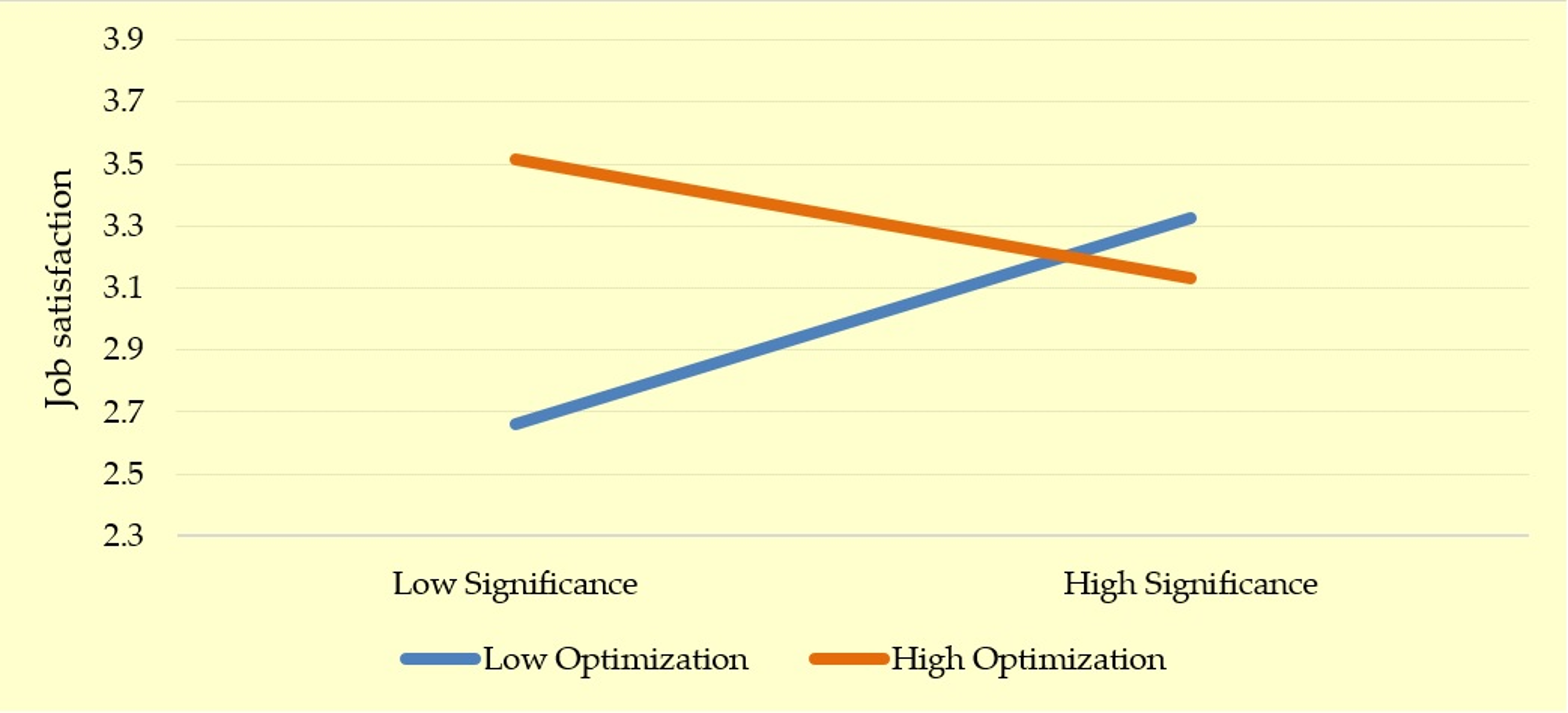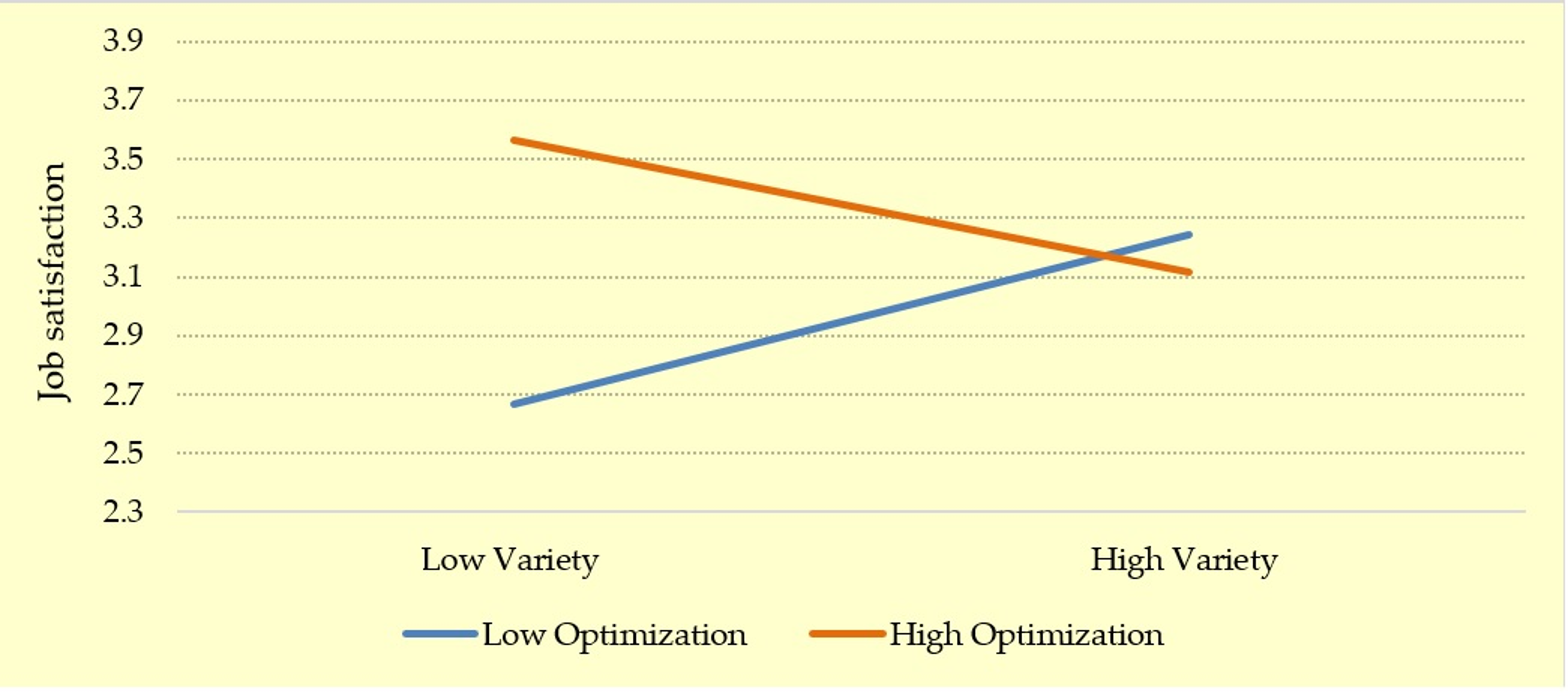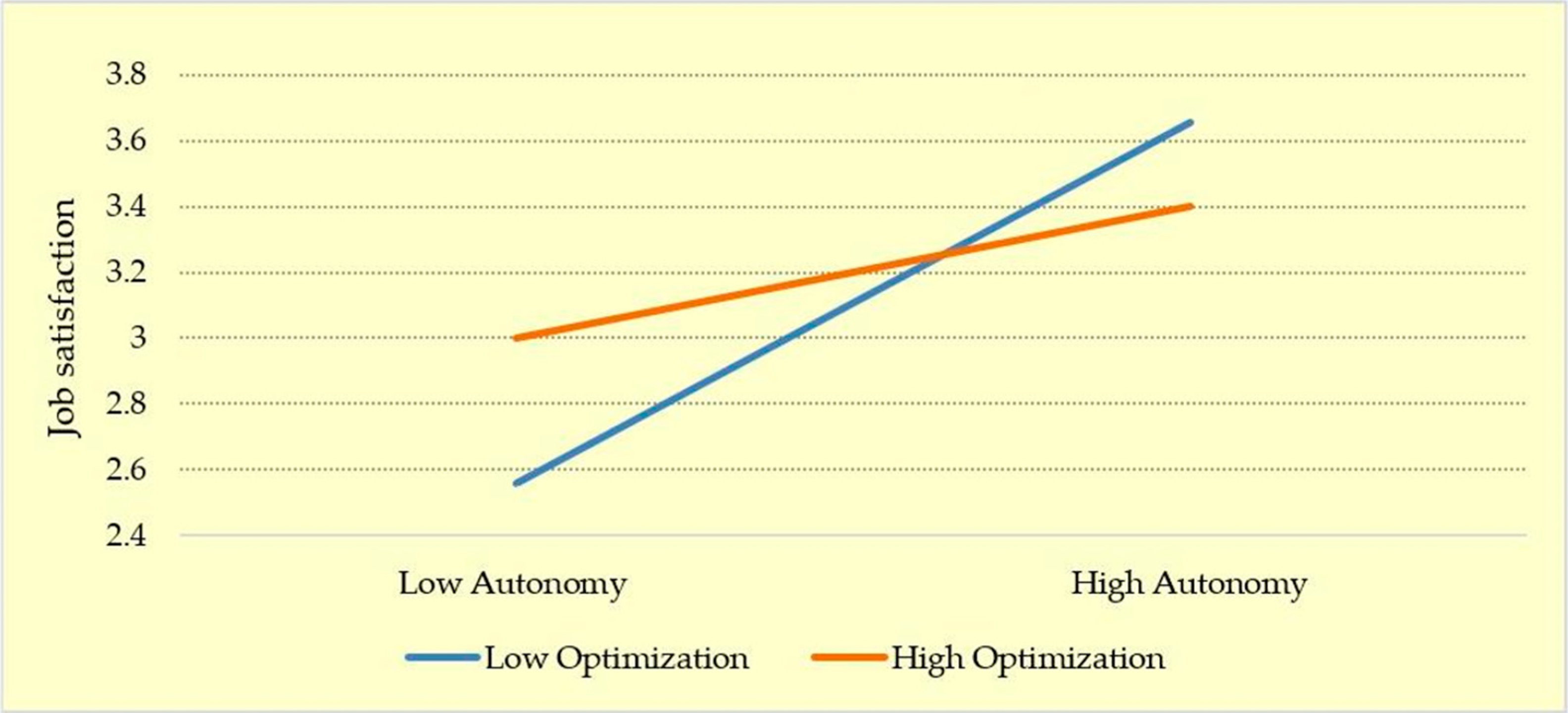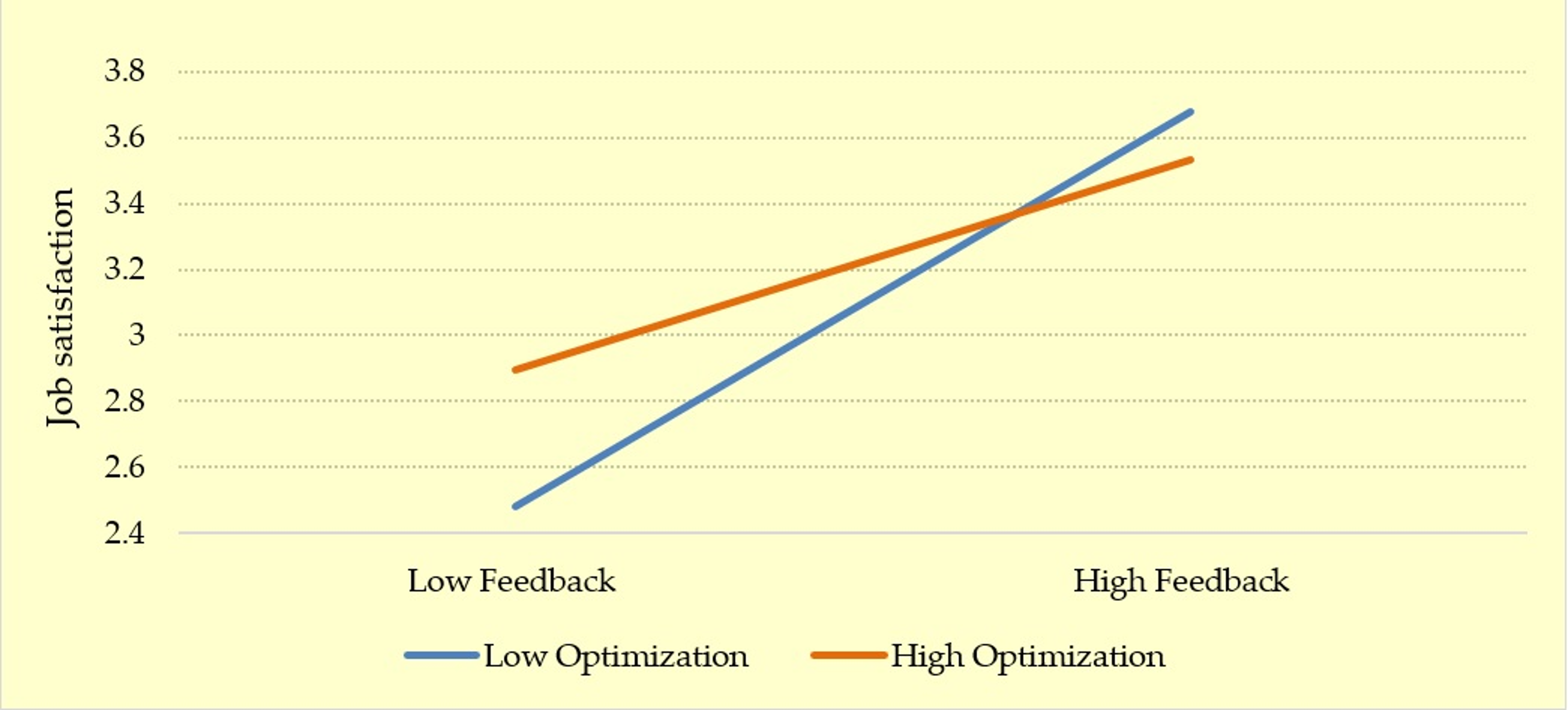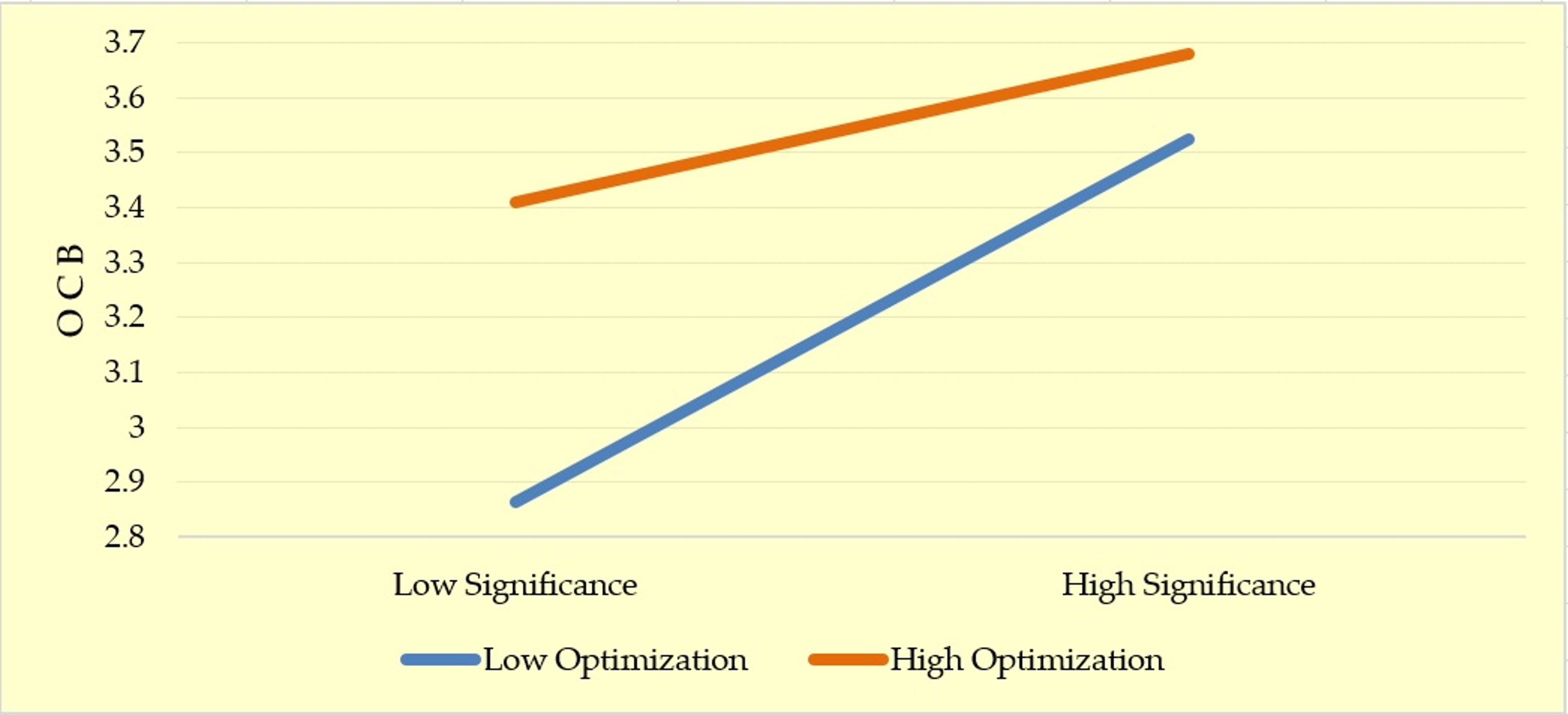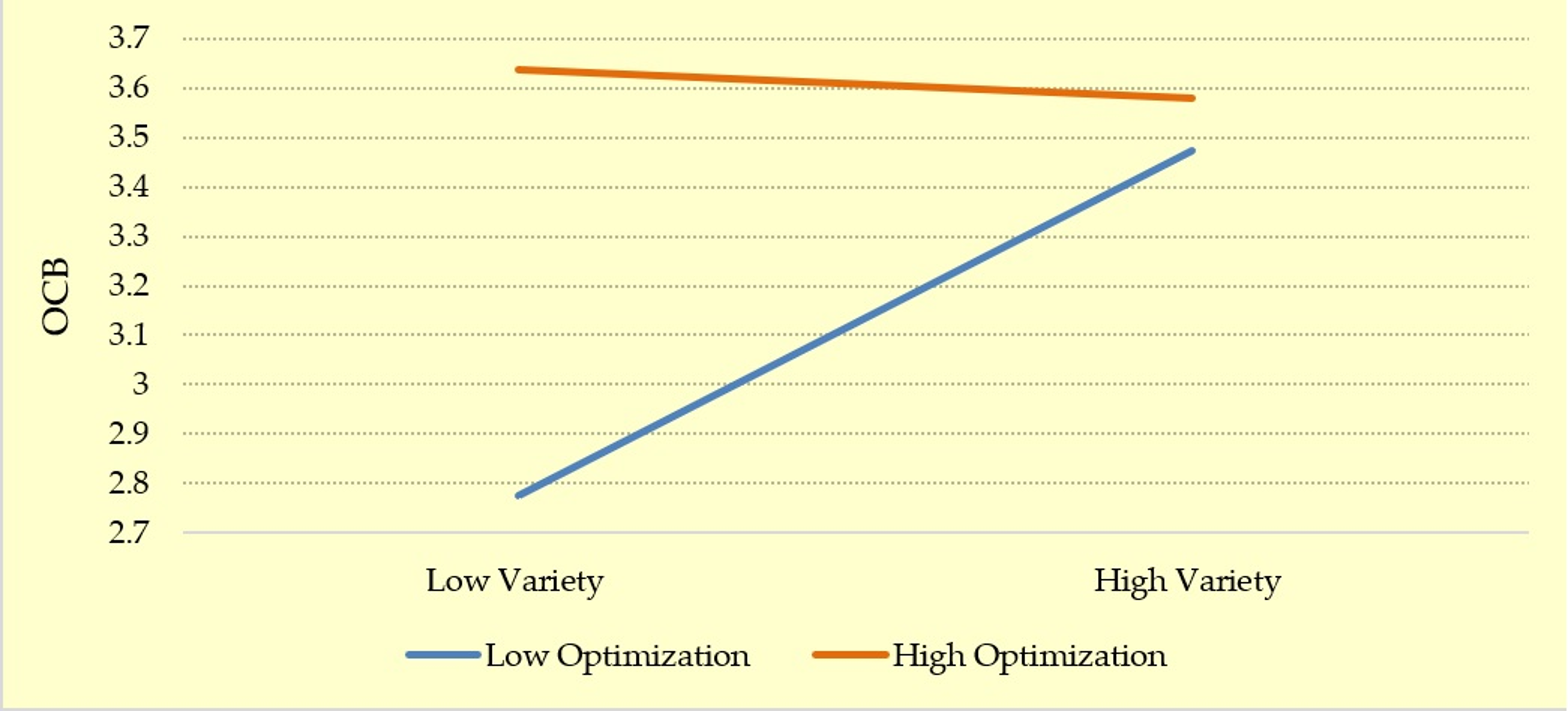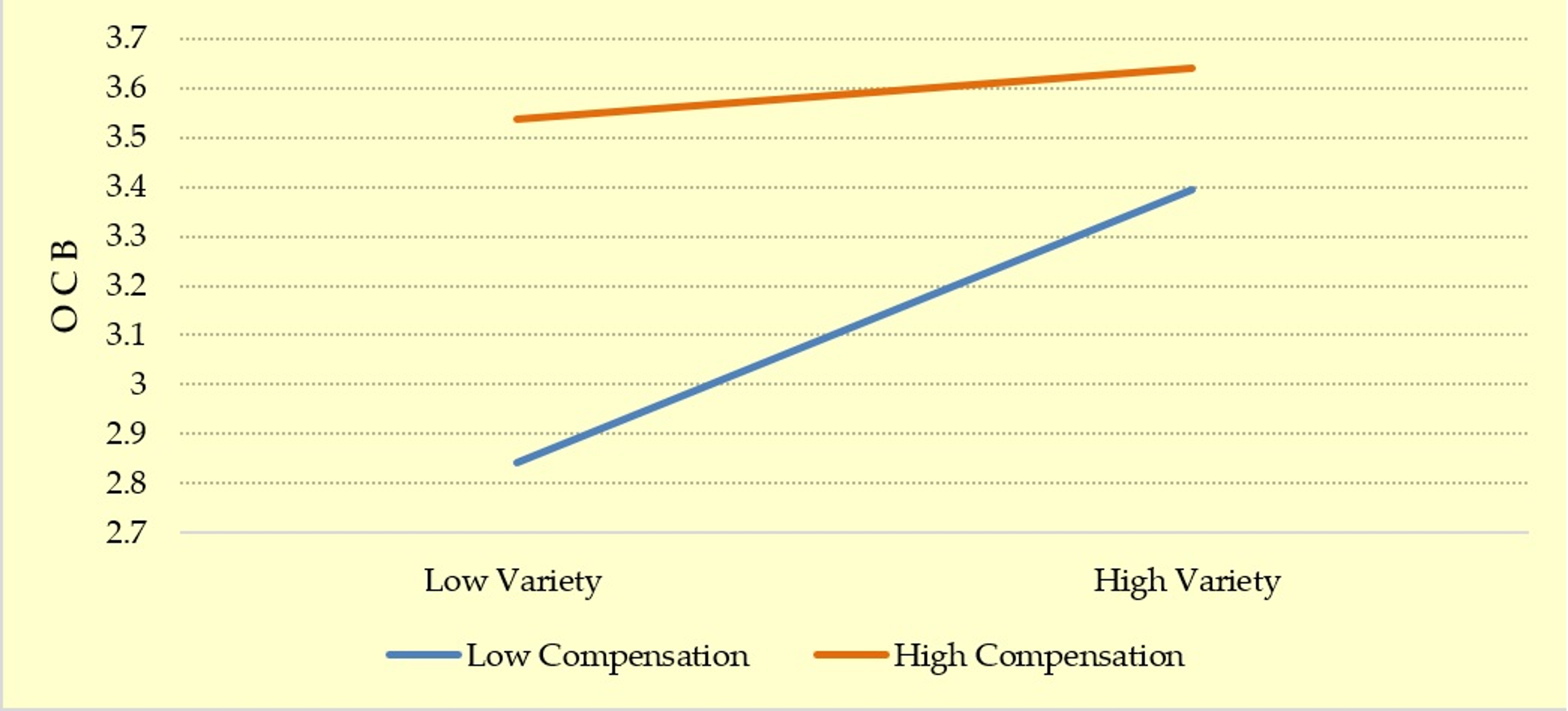1. Introduction
Nowadays, population aging, doubts about the strength of public pension systems, and recognition of the older workers’ accumulation of knowledge and professional experience have jointly contributed to encouraging people to stay at work longer. Despite this, fast changes, employment insecurity, and negative stereotypes toward older workers threaten their well-being [
1]. Moreover, the psychology of sustainability and sustainable development [
2,
3,
4] encourage research and intervention directed toward the development of resources at the personal level [
5,
6,
7], and the construction of healthy working environments [
8,
9,
10,
11] at the organizational level. Such organizations provide their members with healthy working conditions, which are characterized by their meaningfulness, responsibility, and knowledge, which in turn foster employee well-being. Hence, healthy organizations would be more appropriate for workers in general, and still more so for older workers [
9,
11]. Healthy organizations could be defined as those where work practices, as well as culture, promote employee well-being and organizational effectiveness [
12]. This way of organizing employees’ activities motivates them and can affect their well-being. Consequently, healthy organizations are environments [
13] in which older workers’ permanence and productivity are more likely. So, these are environments in which older workers could find the organizational conditions that are needed for successful aging at work [
14].
In these organizations, jobs are characterized by their task significance, variety, work methods, autonomy, and feedback from the job; these characteristics are sources of intrinsic motivation and experiences of meaningfulness, responsibility, and knowledge of the outcomes at work [
15,
16]. Positive psychology has stated that individual well-being can be conceptualized both as hedonic and eudaimonic well-being. Hedonic well-being refers to the affective and cognitive components of satisfaction assessment, whereas eudaimonic well-being refers to the individual’s psychological and the social functioning. Empirical research has supported that employee well-being is likely to be influenced by the characteristics of positive organizations [
17]. Accordingly, meta-analysis supported that task characteristics are related to workers’ attitudes and behaviors, such as job satisfaction and organizational citizenship behaviors (hereafter, OCB).
However, to remain at work and maintain productivity, older workers need to constantly adapt to job demands due to a set of age-related physical and cognitive changes, which are often accompanied by changes in emotion regulation, personality traits, and motivational orientations, among others [
12]. Hence, people can apply individual adaptive strategies, which consider personal age-related changes and the ultimate purpose of increasing their adaptation to the job. Hence, individual adjustment strategies have also been considered to have a strong influence on employee well-being [
14]. Moreover, studies have accumulated evidence of age as a moderator in the relationship between task characteristics and outcomes, and a lifespan development perspective on job design was proposed [
18]. This perspective examines the interplay between age and work features, because adults devote a relevant part of their lifespan to work, which allows them to apply these adaptive processes. In accordance with this evidence, the present study aims to explore the relationships between task characteristics and older employees’ well-being [
19], such as job satisfaction [
20] and OCB [
21]. The main contribution of the present research is to offer concrete recommendations both to Human Resources (HR) managers and older workers. This will allow us to determine whether the level of SOC strategies shows a differential impact of task characteristics on workers’ attitudes and behaviors (high impact for workers with low SOC strategies and low impact for workers with high SOC strategies).
Selection, Optimization, and Compensation Use and Its Moderating Role at Work
As Baltes and Baltes [
22] stated, older adults experiencing age-related decline can cope with these discontinuities by using the selection—both elective selection and loss-based selection—optimization, and compensation strategies (hereafter, SOC) as a mechanism that leads to a positive balance between age-related gains and losses. Hence, individuals using SOC as a personal resource adapt better to their environments and their job demands [
11,
23].
Moghimi, Zacher, Scheibe, and Van Yperen [
24] meta-analyzed the empirical evidence on SOC, but their specific role in the relationships between task characteristics and older employees’ outcomes has only received limited attention [
25,
26]. Among these studies, several limitations emerge such as for instance, the inclusion of limited task characteristics, the mainly negative antecedents of well-being such as burnout [
27], and relying on work ability as a criterion variable [
28]. Moreover, most studies used overall SOC, or three strategies, with only one study including four dimensions [
24].
Hence, we argue that it is necessary to consider the moderator role of the four SOC strategies in the relation between task characteristics and older employees’ well-being. This moderator role can be explained by people going to great lengths to accumulate and hold onto resources, and they are therefore hurt by losses, or by the threat of losses. Threats of loss will undermine future well-being not only due to their predictive power of subsequent “actual losses”, but mainly due to their indirect role as sources of stress [
27]. Threats are both energy and resource-consuming, and even in the absence of later losses, threats themselves could exert a negative influence on the subsequent availability of emotional and cognitive resources. As unhealthy working environments are characterized by less motivating task features, people could proactively engage in accumulating resources to prevent future depletion or in compensating for the actual losses of meaningfulness and knowledge by improving their resources or selecting highly motivating goals [
18]. Hence, SOC strategies could play a buffering role, and the negative impact of a lack of motivational characteristics should be lower in employees with high SOC use [
28]. These subtle processes would explain the hypothetical moderating role of SOC in the relationships between task characteristics and employees’ outcomes. Since the four SOC dimensions could at least entail a gain cycle, by increasing resource accumulation or decreasing resource consumption, the present study proposes the hypothetical moderating role of SOC in the relationships between task characteristics and employees’ outcomes [
29]. Although some studies have previously considered SOCs as moderators in the relationships between work environment characteristics and employee’s well-being [
25,
26,
27,
28], empirical evidence is controversial [
24].
Employee well-being could be conceptualized as hedonic and eudaimonic [
30]. Hedonic well-being consists of self-realization, but also of social integration, contribution, and actualization, among other facets [
31]. Based on this approach, affective job satisfaction has been considered a direct indicator of hedonic well-being at work [
20]. From the eudaimonic perspective, well-being would include the employee behaviors that are positively oriented toward other people in the work environment or toward their organization, such as OCB.
Based on the literature reviewed, it is hypothesized that:
Hypothesis 1 (H1). SOC will moderate the relationship between task characteristics—(H1a) significance, (H1b) variety, (H1c) autonomy, and (H1d) feedback from the job—and job satisfaction.
Hypothesis 2 (H2). SOC will moderate the relationship between task characteristics—(H2a) significance, (H2b) variety, (H2c) autonomy, and (H2d) feedback from the job—and OCB.
3. Results
The non-response bias has been tested by comparing the demographic features of respondents who participated in both times and non-respondents at Time 2 (T2). ANOVA analyses on age, gender, education, organizational tenure, organizational position, and type of contract have been conducted. While both groups did not differ on gender [F(243,1) = 0.59;
p = 0.44], education [F(243,1) = 0.18;
p = 0.89], organizational position [F(243,1) = 2.31;
p = 0.12], or type of contract [F(243,1) = 0.107;
p = 0.53], they significantly differed on age [F(243,1) = 101.92;
p < 0.001] and organizational tenure [F(243,1) = 24.28;
p < 0.001]. Respondents tended to be younger and are more likely to have longer organizational tenure.
Table 1 displays the descriptive statistics and correlations among the study variables.
Age was not significantly related to SOC, job satisfaction, or OCB. All of the task characteristics were positively and significantly related to each other, except for a negative correlation between variety and feedback from the job. Task characteristics had a positive relationship with optimization and compensation, but not with either elective selection or loss-based selection. Regarding the outcome variables, job satisfaction was significantly related to task significance, autonomy, and feedback, but not to variety. Furthermore, OCB had positive and statistically significant relationships with all of the variables.
3.1. Relationship between Job Characteristics and Job Satisfaction
Significant results for the moderating role of SOC strategies results were found only in the interaction between job characteristics and optimization. As shown in
Table 2, the interaction between optimization and task significance predicted job satisfaction [low optimization, B = 0.43, SE = 0.14, t = 3.11,
p < 0.00, 95% CI [0.15, 0.71] versus high optimization, B = −0.24, SE = 0.11, t = −2.11,
p = 0.03, 95% CI [−0.48, −0.01]. However, the interaction between the other SOC strategies (elective selection, loss-based selection, and compensation) and task characteristics failed to predict job satisfaction. The complete results are available from the corresponding author on request.
See
Figure 1 showing that job satisfaction decreases when task significance increases and optimization is high.
The interaction between optimization and task variety significantly predicted job satisfaction [low optimization, B = 0.34, SE = 0.13, t = 2.54,
p < 0.05, 95% CI [0.07, 0.61] versus high optimization, B = −0.26, SE = 0.11, t = −2.36,
p < 0.05, 95% CI [−0.49, −0.04]. See
Table 3.
See
Figure 2 showing that job satisfaction decreased when task variety increases and optimization is high.
There was a significant effect of task autonomy on job satisfaction, but when optimization was high, the effect of autonomy became less intense and totally lost its statistical significance [low optimization, B = 0.58, SE = 0.10, t = 5.66,
p < 0.001, 95% CI [0.38, 0.78] versus high optimization, B = 0.21, SE = 0.10, t = 1.97,
p = 0.0501, 95% CI [−0.0001, 0.42]. See
Table 4.
See
Figure 3 showing that job satisfaction increases when optimization is high and task autonomy increases.
Optimization was found to be a moderator in the relationship between feedback from the job and satisfaction [low optimization, B = 0.83, SE = 0.11, t = 7.50,
p < 0.001, 95% CI [0.61, 1.05] versus high optimization, B = 0.44, SE = 0.12, t = 3.47,
p < 0.00, 95% CI [0.19, 0.70]. See
Table 5.
See
Figure 4 showing that job satisfaction increases when optimization is high and feedback from the job increases. Therefore, hypotheses 1a, b, c, and d were only partially supported.
3.2. Relationship between Job Characteristics and OCB
Optimization moderated the task significance—OCB relationship, as shown in
Table 6 [low optimization, B = 0.41, SE = 0.08, t = 5.09,
p < 0.001, 95% CI [0.25, 0.57] versus high optimization, B = 0.17, SE = 0.08, t = 1.91,
p = 0.06, 95% CI [−0.005, 0.34].
See
Figure 5 showing that OCB increases when optimization is high and task significance increases.
Regarding task variety, both optimization and compensation moderate the relationship between task variety and OCB. Firstly, as
Table 7 showed, OCB decreases when optimization is high and task variety increases [low optimization, B = 0.41, SE = 0.09, t = 4.58,
p < 0.001, 95% CI [0.23, 0.60] versus high optimization, B = −0.03, SE = 0.07, t = −0.4389,
p = 0.66, 95% CI [−0.18, 0.11].
See
Figure 6 showing that OCB decreases when optimization is high and task variety increases.
Secondly, as
Table 8 showed, OCB increases when compensation is high and task variety increases [low compensation, B = 0.32, SE = 0.08, t = 3.76,
p < 0.01, 95% CI [0.15, 0.49] versus high compensation, B = 0.06, SE = 0.07, t = 0.86,
p = 0.58, 95% CI [−0.08, 0.20].
See
Figure 7 showing that OCB increases when compensation is high and task variety increases.
Hence, hypotheses 2a and 2b were only partially supported, while hypotheses 2c and 2d were totally rejected. None of the SOC strategies moderated the relationship between task autonomy and OCB, on the one hand, or feedback from the job and OCB on the other. The complete results are available from the corresponding author on request.
4. Discussion
One of the main assumptions of the positive psychology framework is the relevance of optimization on disposition and the use of personal strengths [
6,
8,
12,
23] to prevent the future depletion of resources [
39,
40] and experiences of reduced quality of life [
41]. According to this approach, the main aim of this study was to analyze the moderating role of SOC strategies in the relationship between task characteristics and older workers’ attitudes and behaviors, as suggested by previous studies [
42]. The results underline that the use of SOC, mainly optimization and compensation, or loss-based selection to a lesser extent, could be mechanisms for successful aging and extending working lives [
43], but some discrepancies deserve a more detailed discussion [
18,
44].
Firstly, one of the most relevant contributions of the present study is that optimization may be the most efficient strategy to increase job satisfaction when the job design is not suitable for older workers [
45]. Optimization is the process that is focused on the acquisition of new tools, improving skills, and learning by modeling from others who are successful performing or directing energy to achieve important goals. Therefore, when the task characteristics are inappropriate, workers could use SOC to regulate themselves and find a new basis for motivation, showing high levels of well-being compared with those with do not apply SOC strategies. These findings are in line with the tenet that people make efforts to increase gains and reduce the actual losses of resources [
46,
47] and prevent future loss. At work, a lack of a positive environment, reduced autonomy, task significance, variety, and feedback could derive in a lower perception of meaning, a decrease in responsibility, and knowledge for older workers [
48]. In order to prevent the detrimental impact of actual loss or even the threat of a loss of meaning, workers’ strategies could act as a renewed source of motivation or even as buffers, reducing the negative influence of the inadequate working environment on personal well-being [
49].
Moreover, the most relevant contribution of this work is to point out the more efficient strategies, such as optimization, and those that are less efficient—such as compensation or loss-based selection—or those that are only efficient in some fields. As changes in job design are often slow, difficult to implement, and in most situations, beyond workers’ control [
50], the use of these strategies provides an interesting avenue for intervention to improve employee well-being. However, their impact on OCB is more limited [
16]. In this sense, several studies have found weaker effects when evaluating behaviors than when analyzing employees’ attitudes. In addition, OCB has been assessed as a global construct, but there may be individual differences in the tendency to manifest some OCB rather than others at work [
51].
More specifically, this study shows that optimization is the most successful strategy to cushion the effects of job characteristics on older employees’ attitudes and behaviors. When these workers show a poor use of this strategy, their job satisfaction and OCB depend strongly on the task significance, their experience of autonomy, and receiving feedback from their job. Conversely, when they make good use of optimization, desirable attitudes and behaviors are relatively independent of task characteristics. Despite this general finding, our research showed two specific patterns. One of them was related to the relationships between task significance and task variety on the one hand, and job satisfaction on the other. The other pattern was related to the relationships between work methods autonomy and feedback from the job, on the one hand, and job satisfaction on the other. As
Figure 1 and
Figure 2 display, employee job satisfaction decreases when both task significance and task variety are high. Instead, as
Figure 3 and
Figure 4 display, job satisfaction increases when optimization is high, and both autonomy and feedback increase. This discrepant finding could be concealing a curvilinear relationship between variety and employee satisfaction, since task significance and task variety could imply an increase of cognitive demands that would be motivating from one viewpoint, but could also be an overload, more specifically for older workers [
28]. Additionally, the continued use of SOC for a long time would be an extra effort with a less beneficial effect on well-being over the long term [
27]. Future research collecting three or more waves could clarify the specific relationships for different task characteristics [
44].
The present findings confirm some of the conclusions of previous studies [
24]. Firstly, some task characteristics, such as job autonomy, should be considered strong correlates of the SOC used. Our findings support this assertion. Moreover, we expand the range of correlates of the SOC strategy, including feedback from the job and task significance. Secondly, SOC use significantly influences job satisfaction and OCB, which are considered part of job performance. Our findings support that SOC use predicts job satisfaction better than job behaviors. Feedback provides information about the viability of plans, and it allows people to regulate their behavior. In this sense, feedback from the job would help individuals correct their behaviors and adapt them through the optimization strategy [
52].
Thirdly, our findings are also in line with other primary studies [
35,
42]. Additionally, other studies reported that a high use of SOC strategies facilitated older employees’ maintenance of a positive view of work, even when task complexity was high [
18,
53].
These findings highlight a concern for people who possess fewer resources, which could put them in a disadvantaged position in which they concentrate preventive resources in order to cope with future loss [
54]. As members of stigmatized groups suffer frequently from the prevention from accumulating or even from using their current resources, interventions aimed at overcoming the negative stereotypes of older workers would protect them from being less able to profit their existing resources.
Limitations, Suggestions for Future Research, and Practical Implications
A first limitation of this work is the use of a design with two moments of data collection but with a short time interval between the two phases. Hence, the relationships between these variables should be explored through more complex designs, including interventions such as training courses or training programs, and then assessing the impact of strategies on outcomes. Second, even though we consider a wide range of antecedents by trying to collect the task characteristics, this is only a part among all of the possible variables. Due to the necessity of reducing the length of the survey, we have not included the task identity dimension among the predictor variables. Especially when it comes to late work life, people’s negative expectations about outcomes could influence their successful aging at work [
55]. Thirdly, although we believe that this SOC measure was successful and economical because of its reduced length in evaluating the use of strategies, future studies could also incorporate concrete daily behaviors. For example, more objective assessments could be made through methods of daily reconstruction or the sampling of experiences. Another important limitation is the small size of the sample and the participant selection procedure. In this sense, the non-response bias could be considered a serious concern, as a reviewer suggested. Attrition could lead to a loss of power in the statistical analyses, due to increase the change of both type I and type II errors. Moreover, attrition tends to be associated with having poor health or lower financial status [
56]. Our analyses supported that older participants and those with longer organizational tenure tended to remove themselves from the survey. These characteristics allow us to propose the generalization of the very limited results, which can be applied to Spanish workers with levels of training similar to those of our participants, but they cannot be extrapolated to most of the older population. A future line of research would test a mediated moderation model, considering the mediating effect of job satisfaction on the relationship between task characteristics and OCB and the moderating effects of SOC on task characteristics and job satisfaction relationships. We thank an anonymous reviewer for these suggestions.
Although the findings of this work are limited, organizations, HR managers, and workers themselves may adopt individual strategies to increase the sustainability in their social environments [
57]. First, organizations can properly assess the negative impact of an impoverished job design on employee attitudes and behaviors, which now seems to be underestimated. As the findings seem to support that some task characteristics—such as task significance, autonomy, and feedback—correlate with job satisfaction and OCB more strongly than others, organizations could redesign jobs to motivate older employees. As for HR managers, they could increase their efforts to enrich jobs to provide older workers with a more motivating environment, but also train them to critically identify deficits and actively engage in accumulating resources to cope with them. As a recent study showed, an organizational climate for successful aging is positively associated with relational civility and respect [
12]. Hence, if the organizational climate is adequate for successful aging, better opportunities could be perceived by older employees, and these perceptions in turn would improve their satisfaction and OCB. Finally, the amount of time and opportunities that older workers perceive as remaining for them in their work future would impact their job satisfaction and OCB. Hence, depending on their personal aging experiences, workers could focus on developing some strategies more than others to minimize the negative impact of the physical and cognitive decline on their attitudes and behaviors. As SOC serve as moderators between task characteristics and outcomes, these strategies should be trained so that people can learn how to better choose their professional goals, optimize their action plans, and cope with their losses of resources.
